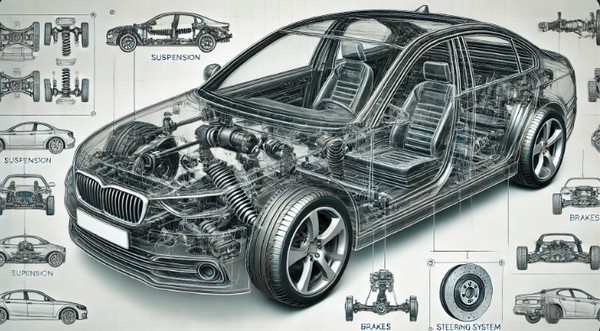Obd2 C Codes, often overlooked by generic scanners, are crucial for diagnosing problems within your vehicle’s chassis system. These codes provide insights into issues affecting critical components like steering, suspension, and brakes, ensuring safe and optimal vehicle performance. This article delves into the significance of OBD2 C codes, differentiating them from other diagnostic trouble codes and highlighting the necessity of a specialized scanner for accurate interpretation.
OBD2 C Codes: A Focus on Chassis Systems
C codes, also known as Chassis codes, fall under the OBD2 (On-Board Diagnostics) system’s diagnostic framework. They pinpoint malfunctions within the vehicle’s structural and handling components, encompassing:
- Suspension: Problems with shocks, struts, springs, and related parts.
- Brakes: Issues with the anti-lock braking system (ABS), brake lines, and other braking components.
- Steering: Faults within the power steering system, steering column, and related mechanisms.
Distinguishing OBD2 C Codes from P and U Codes
OBD2 diagnostic trouble codes are categorized based on the vehicle system they represent:
- P Codes (Powertrain): Indicate problems within the engine and transmission, commonly detected by basic OBD2 scanners.
- U Codes (Network): Signal communication errors between various vehicle modules, such as the engine control unit (ECU) and transmission control module (TCM).
- C Codes (Chassis): Specifically address issues within the physical control and stability systems of the vehicle, requiring a specialized scanner for diagnosis. Unlike P and U Codes, they are not typically readable by basic OBD2 scanners.
Key Systems Generating OBD2 C Codes
Several chassis systems can trigger OBD2 C codes, including:
- Suspension Systems: Uneven ride height, faulty shock absorbers, or worn-out springs can generate C codes.
- Brake Systems: Malfunctioning ABS components, worn brake pads, or leaks in the brake lines can trigger these codes, ensuring prompt attention to safety-critical issues.
- Steering Systems: Issues with electronic power steering (EPS), steering angle sensors, or other steering components often result in OBD2 C codes.
The Importance of Advanced Scanners for OBD2 C Code Reading
Most entry-level OBD2 scanners primarily focus on P codes, neglecting crucial chassis system diagnostics. Utilizing a professional-grade scanner capable of reading OBD2 C codes is paramount for comprehensive vehicle health assessments. These advanced scanners offer:
- Complete Diagnostic Coverage: Access to chassis-related DTCs ensures thorough identification of suspension, steering, and braking system problems.
- In-depth Analysis: Detailed reports provide comprehensive insights into the nature of the issue and potential solutions.
- Preventive Maintenance: Early detection of problems through accurate diagnostics facilitates timely repairs, preventing costly escalation of issues.
Conclusion: OBD2 C Codes – Essential for Complete Vehicle Diagnostics
OBD2 C codes play a vital role in diagnosing and addressing chassis-related problems that directly impact vehicle handling and safety. Investing in a professional-grade OBD2 scanner capable of reading C codes is crucial for comprehensive vehicle maintenance and ensuring optimal performance. Ignoring these codes can lead to overlooked safety concerns and potentially more extensive repairs down the line. A thorough understanding of OBD2 C codes empowers vehicle owners and technicians to proactively address chassis system issues, ensuring a safe and reliable driving experience.

